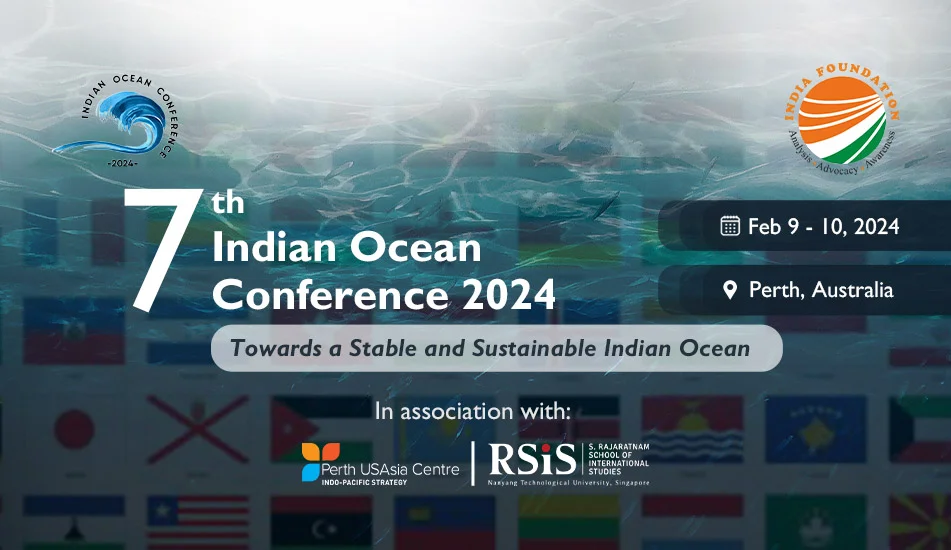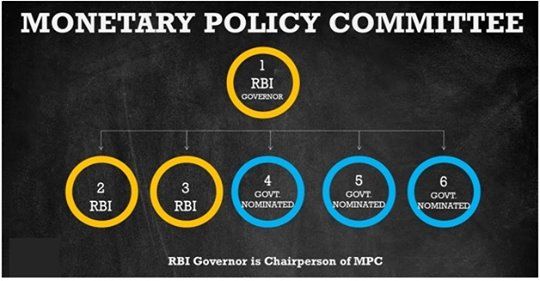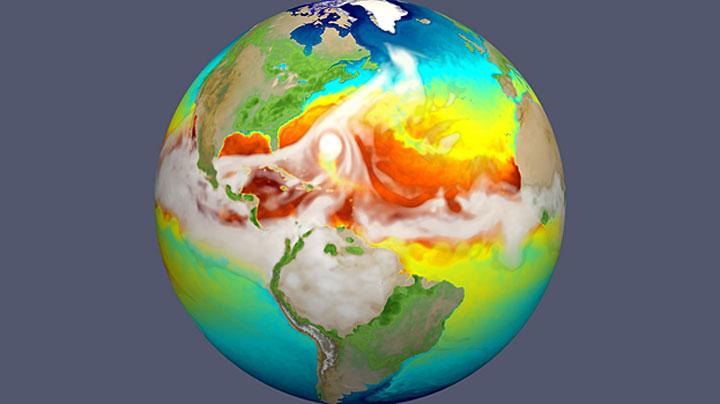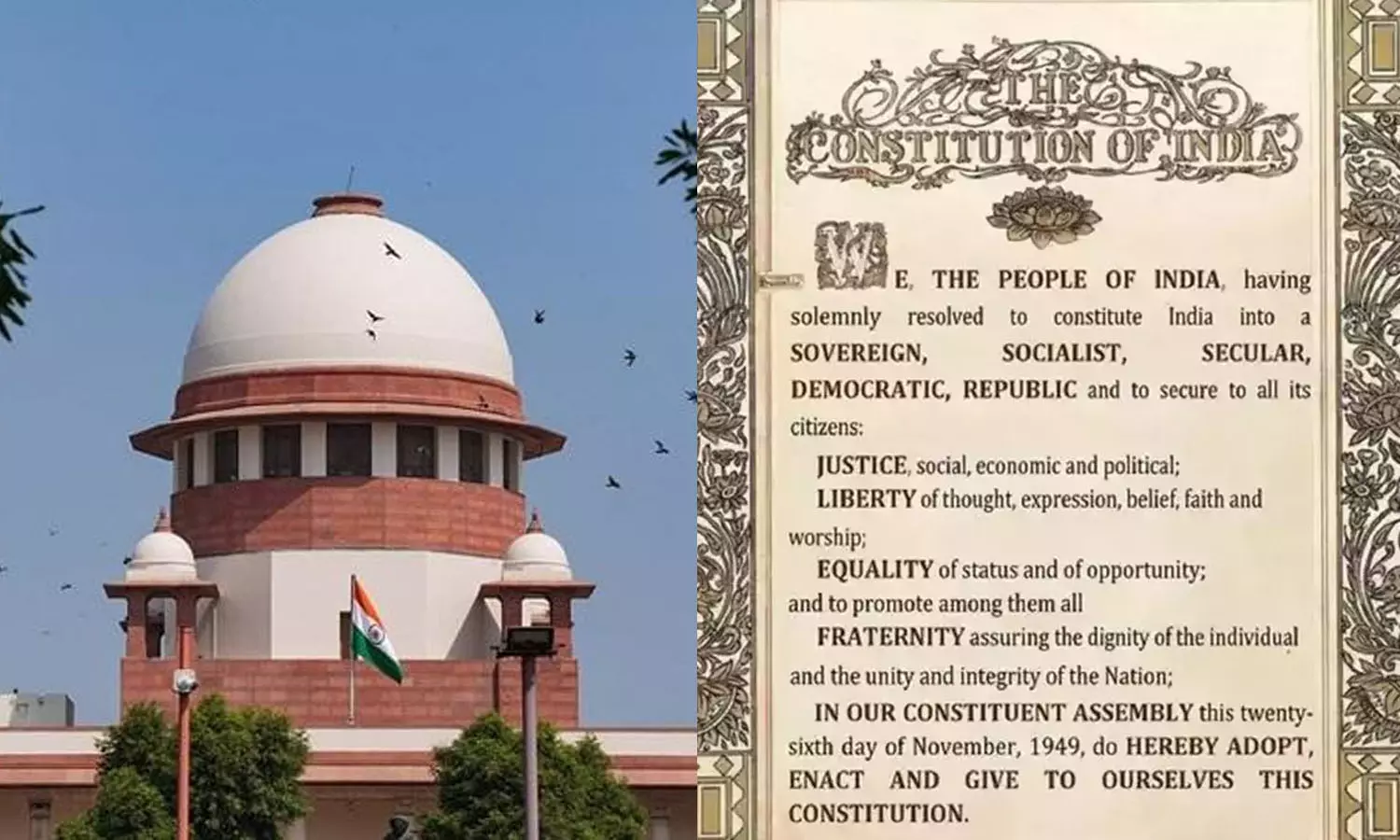7th Indian Ocean Conference 2024 (The Hindu)

- 10 Feb 2024
Why is it in the News?
During the inauguration of the Indian Ocean Conference in Perth, Sri Lankan President Ranil Wickremesinghe highlighted the escalating concerns of smaller countries in the region regarding the militarization of the Indian Ocean and the increasing "great power rivalry."
What is the Indian Ocean Conference (IOC)?
- The Indian Ocean Conference (IOC) is an annual international event that centres on the geopolitical, economic, and strategic significance of the Indian Ocean region.
- It serves as a platform for policymakers, scholars, business leaders, and civil society representatives to discuss security, trade, and cooperation within the Indian Ocean area.
- Established in 2016, the conference's first edition took place in Singapore.
- Notably, the 6th IOC convened in Dhaka, Bangladesh, in 2023.
- Organized by the India Foundation in collaboration with various regional organizations, the IOC facilitates dialogue and collaboration on key issues impacting the Indian Ocean region.
Key Points from EAM Jaishankar’s Speech:
- Addressing Challenges in the Indian Ocean: Jaishankar highlighted the spectrum of challenges in the Indian Ocean, ranging from threats to maritime traffic like piracy and terrorism to concerns about international law, freedom of navigation, and sovereignty.
- He emphasized the interconnected nature of transnational and non-traditional threats, including those arising from illegal activities.
- Concerns about Grey Areas: Expressing concern about grey areas, Jaishankar noted that some issues, such as those related to climate change and natural disasters, are increasingly visible.
- He also discussed disruptive events and their impact, along with the consequences of distant crises like fuel and food shortages.
- Additionally, unsustainable debt, opaque lending practices, and unviable projects are affecting countries in the region.
- Structural Challenges of Globalization: Jaishankar discussed the structural challenges inherent in the current form of globalization, emphasizing over-concentrations in manufacturing and technology.
- He highlighted the importance of dispersing production across different geographies, especially in light of the COVID-19 pandemic, and emphasized the need for reliable and resilient supply chains.
- Additionally, he noted the significance of trust and transparency in the digital era and the emergence of artificial intelligence.
- Drivers of the Future: Jaishankar underscored the importance of focusing on drivers of the future, such as digital technology, electric mobility, green hydrogen, and sustainable shipping, for a sustainable future.
About the Indian Ocean Region (IOR):
- The Indian Ocean Region (IOR) comprises the Indian Ocean and its adjacent territories, including coastal states and islands.
- Extending from the African coast in the west to the Australian coast in the east, and from the Arabian Peninsula and the Persian Gulf in the north to the southern coast of Sri Lanka and Australia in the south, the IOR covers approximately 70.6 million square kilometres, making it the world's third-largest ocean.
Significance of the Indian Ocean Region (IOR):
- Geopolitical Importance: Positioned as a major transit route for global trade, the IOR facilitates the transportation of vital commodities, including oil and gas.
- It hosts critical chokepoints like the Strait of Malacca and the Bab-el-Mandeb Strait, connecting Asia, Europe, and Africa.
- Economic Importance: Boasting several rapidly developing economies like India, China, and various Southeast Asian nations, the IOR is rich in natural resources, attracting substantial foreign investment.
- With 64% of the global population and 60% of the global GDP, the region plays a significant role in the global economy.
- Security Importance: The IOR is a region of paramount security significance, confronting challenges such as terrorism, piracy, and maritime security threats.
- It has witnessed heightened military activity from major powers like the US, India, and China in recent times.
- Environmental Importance: Home to diverse marine ecosystems like coral reefs and mangrove forests, the IOR supports biodiversity and sustains local communities.
- However, it faces environmental risks due to climate change, including rising sea levels and more frequent extreme weather events.
Monetary Policy Committee (MPC) of RBI (The Hindu)

- 10 Feb 2024
Why is it in the News?
The RBI’s Monetary Policy Committee (MPC) has prudently opted to persist with its objective of ‘ensuring that inflation progressively aligns to the target’ by keeping benchmark interest rates unchanged, and sticking with its stance of ‘withdrawal of accommodation’.
About the Monetary Policy Committee (MPC):
- The Monetary Policy Committee (MPC) is a committee of the Reserve Bank of India (RBI), chaired by its Governor.
- The RBI shall organise at least four meetings of the Monetary Policy Committee in a year.
- Established under Section 45ZB of the RBI Act, 1934, the government forms this six-member committee.
Composition of MPC:
- Comprising six members, three are from the RBI, while the remaining members are appointed by the Government of India.
- Members include the RBI Governor (Chairperson), the RBI Deputy Governor responsible for monetary policy, one official nominated by the RBI Board, and three members proposed by the Government of India (chaired by the Cabinet Secretary).
- MPC members serve a single four-year term and are not eligible for reappointment.
Functions:
- The primary responsibility of the MPC is to determine the benchmark policy interest rate (repo rate) to manage inflation within the prescribed target level.
- The current mandate of the committee is to maintain annual consumer price index (CPI) inflation at 4% within a band of +/- 2% until March 31, 2026.
Earth System Model (HT)

- 10 Feb 2024
Why is it in the News?
The Indian Institute of Tropical Meteorology is developing a first-for-India Earth System Model to improve climate forecasts and predict climate impacts.
What is an Earth System Model (ESM)?
- An Earth System Model (ESM) is a complex computer program that simulates the interactions between the various components of our planet's climate system, including the atmosphere, oceans, land, ice, and biosphere.
- These models are crucial for understanding past, present, and future climate trends, and are used for purposes like:
- Improving weather forecasts: By accounting for intricate interactions between different parts of the Earth system, ESMs can potentially lead to more accurate weather predictions, particularly for longer-term forecasts.
- Predicting climate change impacts: By simulating different scenarios of greenhouse gas emissions and other influencing factors, ESMs can project how climate change might affect specific regions and aspects like temperature, precipitation, and sea level rise.
- Informing adaptation and mitigation strategies: With insights into potential climate impacts, policymakers and individuals can make informed decisions about adapting to and mitigating the effects of climate change.
India's Earth System Model:
- Recognizing the importance of such models, India is currently developing its first-ever indigenous Earth System Model, led by the Indian Institute of Tropical Meteorology (IITM) and the Centre for Climate Change Research (CCCR).
- An amount of ?192.28 crores has been sanctioned under the Monsoon Convection, Clouds and Climate Change (MC4) sub-scheme to develop the climate forecasting system
- This project, funded by the Ministry of Earth Sciences, aims to:
- Enhance forecast accuracy: The model will incorporate advanced features to improve the reliability of weather forecasts, particularly for monsoons that are crucial for India's agriculture.
- Facilitate long-term climate studies: By simulating various climate scenarios, the model will provide valuable insights into potential future climate changes affecting India.
- Predict climate impacts: This model will help assess the risks and potential impacts of climate change on various sectors like agriculture, water resources, and coastal ecosystems.
- The project is expected to be completed by 2025 and is believed to be a significant step towards improving India's understanding and preparedness for the challenges posed by climate change.
About the Monsoon Convection, Clouds, and Climate Change (MC4) Sub-Scheme:
- The MC4 initiative aims to enhance our understanding of monsoonal precipitation changes and their implications in a warming climate by enhancing observational databases and climate models.
- Its overarching objective is to refine our understanding of the interactions between monsoon dynamics, clouds, aerosols, precipitation, and the water cycle within a changing climate context.
The nodal ministry overseeing this effort is the Ministry of Earth Sciences (MoES).
What is an Earth System Model (ESM)?
- An Earth System Model (ESM) is a complex computer program that simulates the interactions between the various components of our planet's climate system, including the atmosphere, oceans, land, ice, and biosphere.
- These models are crucial for understanding past, present, and future climate trends, and are used for purposes like:
- Improving weather forecasts: By accounting for intricate interactions between different parts of the Earth system, ESMs can potentially lead to more accurate weather predictions, particularly for longer-term forecasts.
- Predicting climate change impacts: By simulating different scenarios of greenhouse gas emissions and other influencing factors, ESMs can project how climate change might affect specific regions and aspects like temperature, precipitation, and sea level rise.
- Informing adaptation and mitigation strategies: With insights into potential climate impacts, policymakers and individuals can make informed decisions about adapting to and mitigating the effects of climate change.
India's Earth System Model:
- Recognizing the importance of such models, India is currently developing its first-ever indigenous Earth System Model, led by the Indian Institute of Tropical Meteorology (IITM) and the Centre for Climate Change Research (CCCR).
- An amount of ?192.28 crores has been sanctioned under the Monsoon Convection, Clouds and Climate Change (MC4) sub-scheme to develop the climate forecasting system
- This project, funded by the Ministry of Earth Sciences, aims to:
- Enhance forecast accuracy: The model will incorporate advanced features to improve the reliability of weather forecasts, particularly for monsoons that are crucial for India's agriculture.
- Facilitate long-term climate studies: By simulating various climate scenarios, the model will provide valuable insights into potential future climate changes affecting India.
- Predict climate impacts: This model will help assess the risks and potential impacts of climate change on various sectors like agriculture, water resources, and coastal ecosystems.
- The project is expected to be completed by 2025 and is believed to be a significant step towards improving India's understanding and preparedness for the challenges posed by climate change.
About the Monsoon Convection, Clouds, and Climate Change (MC4) Sub-Scheme:
The MC4 initiative aims to enhance our understanding of monsoonal precipitation changes and their implications in a warming climate by enhancing observational databases and climate models.
- Its overarching objective is to refine our understanding of the interactions between monsoon dynamics, clouds, aerosols, precipitation, and the water cycle within a changing climate context.
- The nodal ministry overseeing this effort is the Ministry of Earth Sciences (MoES).
Preamble to the Constitution of India (Indian Express)

- 10 Feb 2024
Why is it in the News?
The Supreme Court recently wondered if the Preamble to the Constitution could have been amended while retaining the date when the Constitution was adopted.
Background:
- In historical context, the Preamble underwent a solitary amendment in December 1976 via the 42nd Constitutional Amendment during the Indira Gandhi Government.
- This amendment introduced two modifications: replacing "unity of the nation" with "unity and integrity of the nation," and inserting "socialist" and "secular" between "sovereign" and "democratic."
- Initially, the Preamble described India as a "sovereign, democratic republic."
- Notably, the Supreme Court affirmed in the Kesavananda Bharati case that the Preamble constitutes an integral component of the Constitution, subject to Parliament's amending authority, provided the fundamental structure remains intact.
About the Preamble of the Indian Constitution:
- The Preamble to the Constitution of India draws inspiration primarily from the 'Objective Resolution' penned by Jawaharlal Nehru in 1946.
- It serves as a concise introduction, outlining the foundational principles and aspirations of the nation. Key components include:
- Source of Constitutional Authority: It affirms that the Constitution derives its authority from the people of India.
- Nature of the Indian State: It declares India as a Sovereign, Socialist, Secular, Democratic, and Republican Polity.
- Objectives of the Constitution: It articulates Justice, Liberty, Equality, and Fraternity as the core objectives.
- Adoption Date: It designates November 26, 1949, as the date of adoption.
- Significance:
- Acts as a guiding framework for interpreting the Constitution and formulating laws.
- Defines the national aspirations and goals.
- Highlights the importance of fundamental rights and values for all citizens.
- Fosters a sense of national unity and identity.
Is the Preamble a Part of the Constitution of India?
- In the Berubari Union Case of 1960, the Supreme Court stated that the Preamble is not a formal part of the Constitution.
- However, it acknowledged that the Preamble provides insight into the intentions of the Constitution makers, thus aiding in interpreting any ambiguities within the Constitution.
- The Kesavananda Bharati Case of 1973 marked a reversal of this stance.
- The Supreme Court declared the Preamble as an intrinsic part of the Constitution, attributing it significant interpretive value.
- It emphasized that the Preamble plays a crucial role in understanding the spirit and objectives of the Constitution, guiding the interpretation of its provisions.
- In the LIC of India Case of 1995, the Supreme Court reiterated that the Preamble is indeed an integral component of the Constitution.
- However, it clarified that while the Preamble holds symbolic importance and helps in understanding the Constitution's essence, it cannot be directly enforced as a law in Indian courts.
Can the Preamble be Amended?
- An essential debate revolves around whether the Preamble can undergo amendments under Article 368.
- In the Kesavananda Bharati Case of 1973, the Supreme Court established that the Preamble constitutes a fundamental aspect of the Constitution and is therefore amenable to amendments.
- However, any such amendment must adhere to the principle that the 'Basic Structure' of the Constitution remains untouched.
Polygamy in India: Insights and debates surrounding Uniform Civil Code (Indian Express)

- 10 Feb 2024
Why is it in the News?
The Uttarakhand Legislative Assembly recently passed the Uniform Civil Code (UCC) Bill, 2024 after a two-day discussion. The Bill brings uniformity in personal laws, governing things such as marriage, divorce, and inheritance, across communities in the state (excluding tribals).
What is Polygamy?
- Polygamy involves the practice of having multiple spouses simultaneously, which can include either wives or husbands.
- It manifests in two primary forms:
- Polygyny, where a man is married to several women concurrently, and
- Polyandry, where a woman is married to multiple men concurrently.
Who can have "multiple wives"?
- Under Hindu law, which applies to Hindus, Sikhs, Jains, and Buddhists, the practice of polygamy is prohibited.
- Individuals governed by Hindu law can face criminal proceedings under Sections 494 and 495 of the Indian Penal Code.
- The Special Marriage Act, as well as Christian and Parsi laws, also outlaw bigamy.
- However, the Shariat Protection Act exempts Muslims in India from the ban on polygamy.
- Additionally, due to the protection granted to cultural practices of scheduled tribes, polygynous marriages can be found in tribal groups across northeastern states, Odisha, Telangana, and other regions.
- Courts have had to face cases where a man converted to Islam from other religions to marry a second wife.
- While the Supreme Court, in its 1994 Sarla Mudgal verdict, declared that conversion solely for a second marriage is invalid, the Law Commission reports from 1961 and 2009 have emphasized the need to clarify the legal position of the "second wife" in a converted Muslim marriage and address the rights of any children born from such a union.
What does the data say?
- Government data on polygamy can be obtained from two main sources — the decadal census and the National Family Health Survey (NFHS). Both have certain limitations.
- The census does not directly collect data on polygamy.
- Rather its incidence is inferred from the difference in the number of married men and the number of married women in the country.
- More married women than men point to the prevalence of situations where men have married more than once.
- Rather its incidence is inferred from the difference in the number of married men and the number of married women in the country.
What does the census data say?
- According to the census of 2011, there are 28.65 crore married men in India, compared to 29.3 crore married women.
- The difference between the two numbers — 65.71 lakh — can be explained either by the incidence of polygamy or men going abroad.
- The highest discrepancy in the population of married men and women can be found among Hindus (who make up the largest number of Indians), followed by Muslims, Sikhs, Christians, Sikhs, and Buddhists.
- However, when compared to their respective shares in the total population, Muslims and Christians report the greatest difference.
What does NFHS data say?
- The NFHS-5 showed the prevalence of polygamy (the percentage of women who reported their husbands had other wives) was highest among Christians (2.1%), followed by Muslims (1.9%), and Hindus (1.3%), looking at religion.
- Overall, Scheduled Tribes reported the highest incidence at 2.4%.
- A June 2022 study by the International Institute of Population Sciences (IIPS) showed that polygynous marriages (one man married to more than one woman at a time) have decreased from 1.9% in 2005-06 to 1.4% in 2019-21, among the whole population.
- Buddhists, who reported a 3.8% incidence of polygyny in 2005-06, saw the sharpest dip of 65.79% to 1.3% in 2019-21.
- The incidence of polygyny in the total population fell by 26.31%.
Constitutional Perspective and Supreme Court's Insights:
- India, as a secular state, upholds the principle of equality among religions, ensuring that no religion holds superiority or inferiority over another.
- The Indian Constitution guarantees fundamental rights to all citizens, and any legislation conflicting with these rights is considered unconstitutional.
- Article 13 of the Constitution invalidates any law inconsistent with Part III of the Constitution.
- Article 14 ensures equal treatment and protection under the law for every individual within India's territory.
- In a 2021 verdict, the Supreme Court highlighted India's recognition of a plural legal system, allowing different religious communities to abide by distinct 'personal laws.'
- However, these personal laws must adhere to constitutional validity and morality, ensuring they do not infringe upon Articles 14, 15, and 21 of the Constitution.
